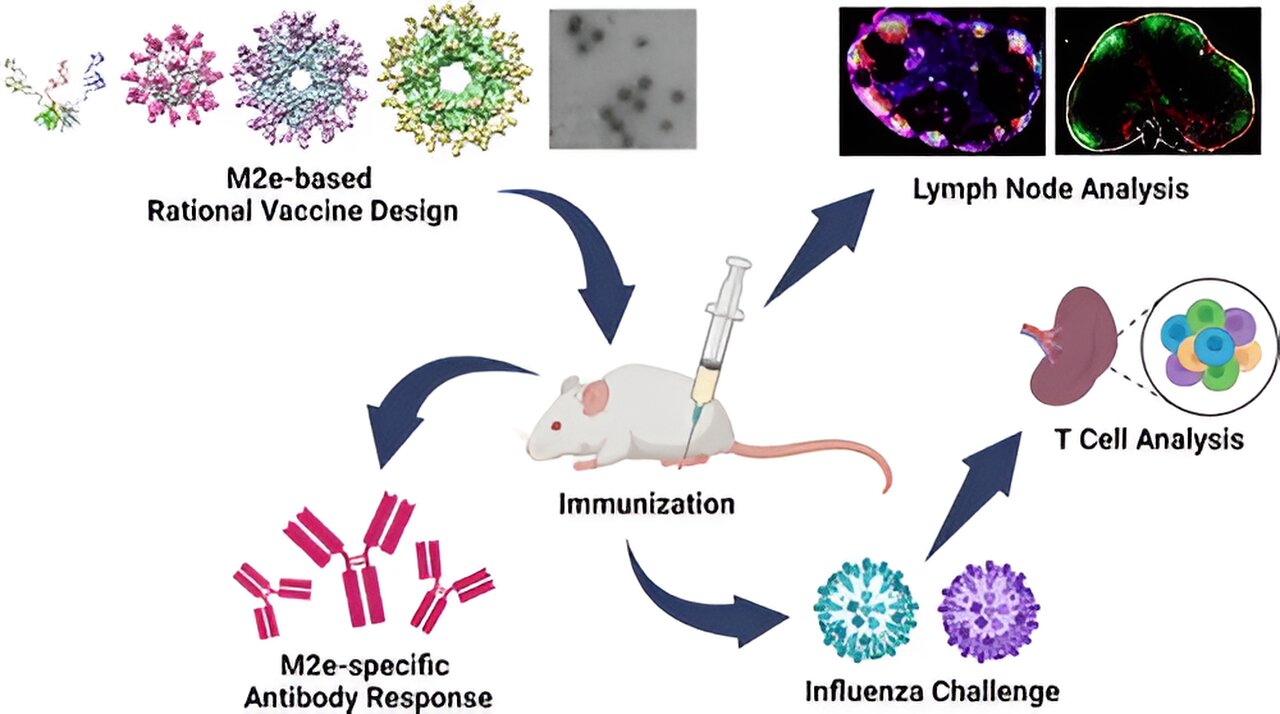Introducing a Breakthrough: A Universal Flu Vaccine on the Horizon
Flu vaccines have always had their limitations, providing only seasonal protection due to the ever-changing nature of the virus. However, scientists at Scripps Research have made a groundbreaking discovery that could revolutionize flu prevention. They have designed a vaccine that targets influenza A strains, one of the two types of flu virus that commonly affect humans.
Published in ACS Nano, their research paper titled “Single-Component Multilayered Self-Assembling Protein Nanoparticles Displaying Extracellular Domains of Matrix Protein 2 as a Pan-influenza A Vaccine” unveils a new vaccine design that utilizes a stable influenza A protein fragment called M2e. By presenting M2e on self-assembling nanoparticles, the immune system is more effectively engaged. Initial animal tests have yielded promising results, suggesting the potential for a universal flu vaccine that offers long-term protection against both common and novel flu strains.
Dr. Jiang Zhu, the senior author of the study, believes that this experimental vaccine could safeguard against various seasonal influenza A strains and even future emergent strains that may cause pandemics. The study’s co-first authors, Dr. Keegan Braz Gomes and Dr. Yi-Nan Zhang, emphasize that M2e is an ideal target for a broadly effective flu vaccine due to its conservation across different strains.
Targeting M2e has posed challenges in the past, as the protein fragment is too small to effectively stimulate the immune system. However, the new vaccine design from Dr. Zhu’s team overcomes this hurdle. Similar to their previous successful vaccines for HIV, SARS-CoV-2, and Hepatitis C, this vaccine presents viral proteins on large nanoparticles, mimicking the structure of a real virus and enhancing immune stimulation. These self-assembling nanoparticles are highly stable and easily manufactured using biotech methods, with multiple copies of the targeted viral protein adorning each nanoparticle.
In their study, the researchers tested a nanoparticle-based design using M2e from an influenza A strain that infects humans, H1N1. Remarkably, all ten mice vaccinated with this design were protected from high-dose exposures to both H1N1 and a different strain called H3N2. In contrast, unvaccinated mice quickly succumbed to the viruses, as did those vaccinated with a non-nanoparticle version of M2e. The team also achieved promising results with a pandemic-stopper design that incorporated M2e proteins from human, bird, and pig influenza A viruses. Furthermore, the M2e-bearing nanoparticles remained in mouse lymph nodes for weeks, continuously stimulating immune responses, while non-nanoparticle-mounted M2e proteins were cleared within hours.
Dr. Zhu is optimistic about the potential of the M2e nanoparticle-mounted design to provide broad protection against influenza A viruses. He envisions a future version of the vaccine that includes influenza B M2e proteins, creating a true pan-influenza vaccine. If proven effective, such a vaccine could significantly reduce the severity of influenza, even in high-risk cases, transforming it into a mild cold.
Excitingly, Uvax Bio, a vaccine company spun off from Scripps Research, is utilizing the proprietary platform technology developed in Dr. Zhu’s lab to develop and commercialize prophylactic vaccines for various infectious diseases. Dr. Zhu and the company are now exploring options to translate the new M2e design into a commercial flu vaccine.
With this breakthrough, the prospect of a universal flu vaccine is within reach, offering hope for a future where the flu is no longer a seasonal threat but a manageable inconvenience.








